How to harvest and cook kale correctly
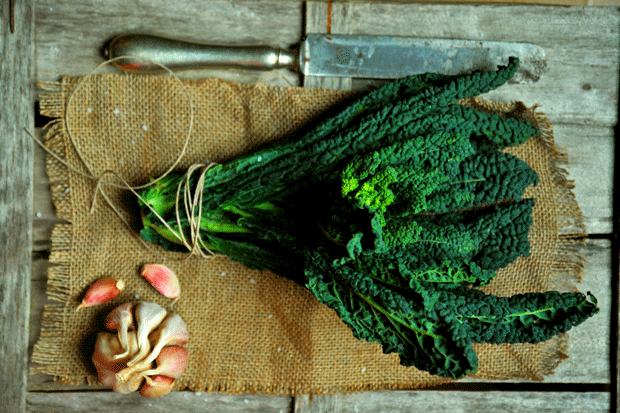
Kale is a trendy healthy option but it can be tough and chewy if not handled with care.
Words: Jenny Somervell
Touring through the vege garden of Andy Burnett at Somerfield’s Nursery in Oxford is always fun, and on this day I spotted a palm tree-like, sculptured rosette of heavily-textured, deep green leaves that I hadn’t seen before. “That’s Cavolo Nero or black Tuscan kale,” he replied. It’s almost black, sort-of a blackish-blue green really. This intriguing vegetable is related to cabbage and cauliflower but doesn’t resemble either, growing in the shape of a palm tree and meaning you harvest its long leaves from the bottom up.
It’s sometimes called dinosaur or ‘dino’ kale as its blistered leaves were thought to resemble dinosaur skin. They certainly look ancient and this is an old plant, descending from wild cabbage and thought to have been brought from Asia Minor into Europe in 600BC. The flavour is rich, intense and slightly sweet, and it’s one of the few vegetables whose flavour is improved when plants are ‘kissed by frost.’ As frosts set in the leaves wrinkle, curl and strengthen, becoming more textural and chewy, developing a richer, more intense flavour. It’s the perfect mid-winter vegetable – you can even harvest it in the snow – and now is a great time to start planting it out.
Last May Ken and I were surprised when we were served Cavolo Nero while out on an anniversary dinner in an award-winning restaurant. The rich dressing wasn’t to my liking but I could see the potential. It inspired me to grow some and I now consider it an indispensable winter green. The dark green foliage literally shouts ‘Eat me, I’m healthy!’
THE QUEEN OF GREENS
Recently this column featured watercress, officially the most nutrient-dense vegetable on the plant, but kale comes a close second, packing in more nutrition for fewer calories than almost any other food. On the Aggregate Nutrient Density Index (ANDI), a scoring system that rates foods on their nutrient content, kale scores 1000, the highest possible score.
During WWII kale cultivation was encouraged for its nutrient value and in Japan kale juice is drunk as a dietary supplement. One cup of raw kale contains almost seven times the recommended daily allowance of vitamin K and more vitamin C than a whole orange. The form of vitamin K – K2 – is involved in preventing heart disease and osteoporosis.
Kale contains four times more magnesium and five times more calcium than Brussels sprouts, and unlike spinach, it is low in oxalates (which can prevent nutrients being absorbed).
Evidence also shows kale has beneficial compounds, including anti-oxidants, with powerful medicinal properties. These have been linked to reducing the risk of cancer, macular degeneration and other health benefits.
THE RESEARCH
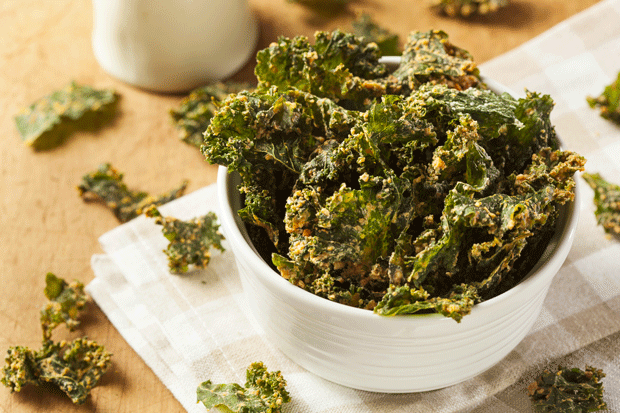
Kale chips
Like other brassicas, Cavolo Nero contains compounds thought to have a protective effect against cancer, including sulforaphane and indol-3-carbinol. All kale cultivars are rich in powerful antioxidants including beta-carotene, vitamin C and many flavenoids and polyphenols which counter oxidation damage in cells. Beta-carotene is converted in the body to vitamin A.
Certain flavonoids in kale – quercetin and kaempferol – are also implicated as cardio-protective, blood pressure lowering, anti-inflammatory, anti-viral and even anti-depressant Kale is high in lutein and zeaxanthin, linked to a reduced risk of age-related macular degeneration, impaired night vision and cataracts.
Kale has been found to contain bile acid sequestrants which bind with bile acids and lower the total cholesterol in the body. Steaming kale increases these bile acid-binding properties. One study showed steamed kale was 43% as potent as cholestyramine, a drug which lowers cholesterol.
Kale is a source of indol-3-carbinol, which boosts DNA repair in cells. An Italian study suggested Cavolo Nero may benefit MS patients through neuroprotective and immunomodulatory effects.
• Even if Cavolo Nero didn’t taste good – and it does when you do handle and cook it right – I would grow it for its ornamental value. I just love the prehistoric-looking leaves.
• Its winter toughness! Our kale plants bounced back after a solid 20cm snowfall and brazened the worst our southerlies had to throw at us with no ill effects and it still tasted delicious.
• Kale bridges the ‘hungry gap’ beautifully; that’s the period in late winter/early spring when there seems to be nothing in the vege garden to harvest. In fact one variety of kale is even called Hungry Gap, and thanks to kale there is now no hungry gap in our vege garden.
5 TIPS FOR GROWING KALE
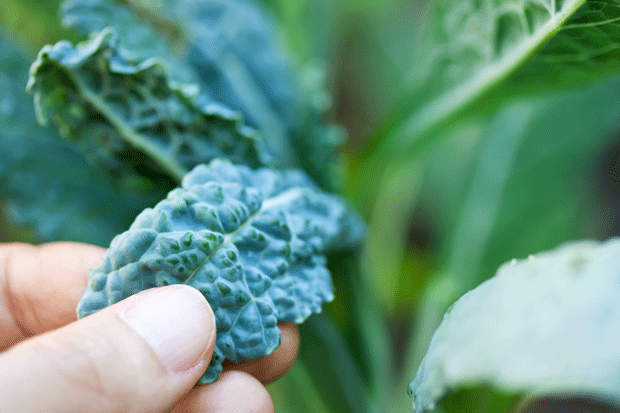
• Kale likes similar conditions to its cabbage relatives, doing best in a well-drained, fertile soil, high in organic matter. In spring or autumn it is best grown in full sun but it can benefit from light shade in hot weather. A soil pH of 6 to 7.5 is preferred but it will tolerate slightly alkaline soil. If pH is low then lime should be added before planting.
• Seeds are sown about 1cm deep in early spring, late summer or early autumn. In spring transplants can also be set out about 4-6 weeks before the average last frost. Plant 40-60cm apart in rows 60-80cm apart.
• Plants prefer plentiful, consistent moisture; plants will tolerate drying out but the flavour will become bitter.
• Kale is less bothered by pests than other brassicas, but to help avoid soil diseases such as clubroot, don’t plant them in the same location more than once every three or four years.
HOW TO AVOID TOUGH, CHEWY KALE
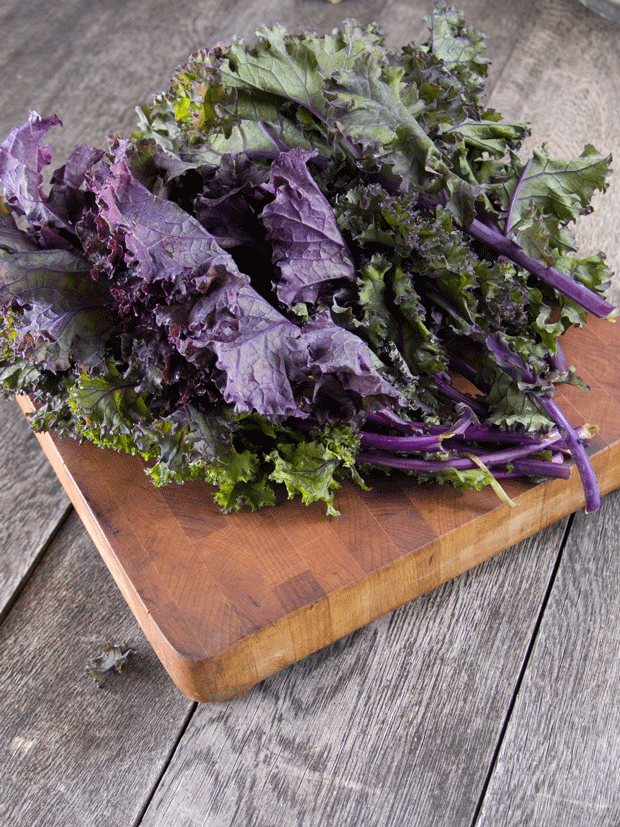
Much of kale’s reputation for being tough and chewy is due to inappropriate cooking and handling.
• Harvesting can start at any stage of development but for best flavour pick after the first frost. Harvest leaves from the bottom of the stem which will leave the remainder of the plant looking like a palm tree.
• Choose firm, deeply coloured-leaves. Smaller leaves are more tender and milder in taste and more suitable for salads.
• Kale is best eaten as soon as possible after picking – it becomes bitter and strongly flavoured with storage.
• If storing, keep it in a plastic bag and remove as much air as possible – don’t wash the leaves as water encourages spoilage.
• Any wilting will cause flavour deterioration.
• The relatively low moisture content means kale does not shrink as much as other greens and needs a longer cooking time. It is not pleasant undercooked and is best served soft.
• Most people cut out the centre stalk as it takes considerably longer to cook than the leaves.
• Research has shown that boiling decreases the level of the beneficial compound sulforaphane. Steaming, microwaving or stir-frying on the other hand, results in no significant loss. It is delicious steamed and served with a drizzle of olive oil and salt.
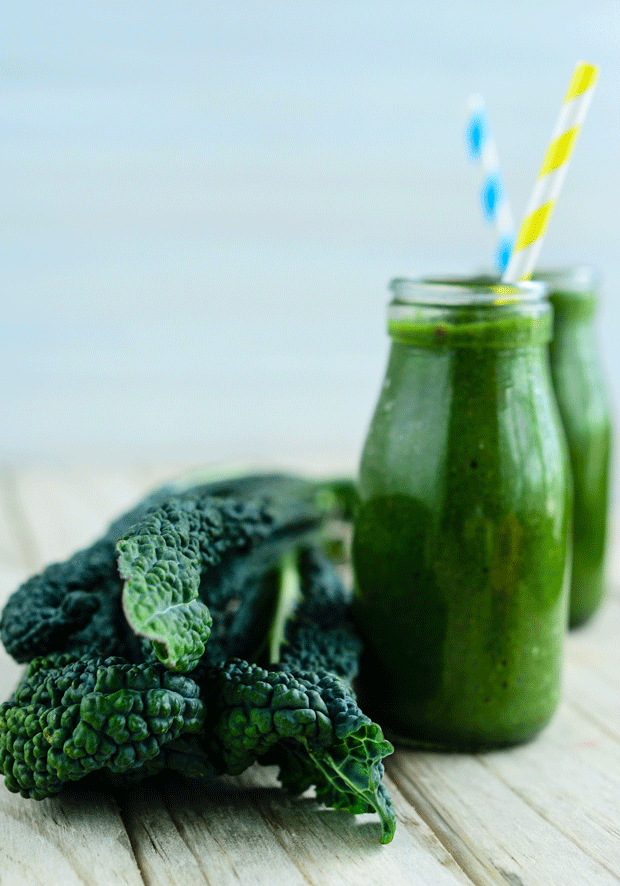
EASY WAYS TO USE KALE IN YOUR COOKING
• Add raw young leaves to salads, especially with other strongly-flavoured ingredients, eg dry roasted peanuts, soy roasted almonds, tamarind, chorizo or a sesame-based dressing.
• Add leaves to hearty stews, slow cooked winter dishes and soups like minestrone.
• Make kale chips by mixing pieces of dry kale with olive oil and sprinkling with spices such as chilli powder, paprika, fine grain sea salt. Bake for about 25 minutes in a low oven (about 150°C) until crunchy, not burnt, and serve immediately.
• Use in place of spinach in lasagne, risotto, and pasta dishes.
• For a mega-nutrient boost add kale to, or make, a kale smoothie.
VARIETIES OF KALE
Kale or borecole (Brassica oleracea var. acephala) is a descendant of wild cabbage and is thought to have originated in Asia Minor. It was probably brought to Europe by Celtic wanderers as early as 600BC where it became one of the most common green vegetables in Europe until the Middle Ages. In the early part of fourth century BC, the Romans referred to curly leaved varieties of cabbage as Sabellian kale, probably the ancestors of modern kale varieties. Ornamental kale and Cavolo Nero are more recent. Ornamentals were first cultivated in the 1980s in California, while Cavolo Nero or lancinato kale was discovered Tuscany in the late 19th century.
Russian kale is a different species (Brassica napus var. pubularia) and was introduced into Canada by Russian traders in the 19th century. Kale varieties differ in size, foliage texture, and colour ranging from light green through to blue-green, red and blackish-blue. The more colourful ornamental varieties grown for bedding display with green, white and purple leaves, are edible but tend to have less flavour. Plants range from dwarf (30-60cm high) to 80cm or higher.
RED RUSSIAN: wavy leaves, touched with red in the colder months
SQUIRE: a form of curly kale (the most common type of kale) with sweet, very curly blue-green leaves, yields well and great in winter stir-fries.
WINTERBOR: extremely cold hardy with finely curled leaves.
CAVOLO NERO SYN LANCINATO: From Tuscany where it is found in almost every vege garden, long, loose leaves of deep green, almost black, puckered leaves.
STIR- FRY KALE COMBO RECIPE
You can use any kind of kale for this dish, preferably of different types and colours. I used Cavolo Nero and Squire, and as I had no red kale, I used the leaves and stalks
of beetroot instead. Serves 4.
INGREDIENTS
Kale leaves, enough to fill a colander
1 onion
1 ‘thumb’ fresh ginger root
6 garlic cloves
2-3 half capsicums, preferably of different colours
1 tbsp olive oil
salt & pepper to taste
1 tbsp avocado oil
1 tbsp red wine vinegar
METHOD
Remove any woody stalks from the kale, cut into bite-sized leaves if large, and wash well. Slice and chop the onion, peel and finely slice the ginger and finely chop the garlic. Thinly slice and chop three half capsicums, one of each colour. Heat a wok or heavy frying pan, add the oil and when hot, toss in the onion, garlic and ginger and stir-fry quickly for 1-2 minutes. Add the capsicum and the still-wet kale and stir-fry for 3-4 minutes, adding a generous grinding of pepper and about ½ tsp of salt to taste. Just before serving, add the avocado oil and the vinegar, stir once more, then serve.
Love this story? Subscribe now!
READ MORE
The 10 best lettuces for the healthiest 365-day salad supply
https://ourwayoflife.co.nz/how-to-grow-alangal/
 This article first appeared in NZ Lifestyle Block Magazine.
This article first appeared in NZ Lifestyle Block Magazine.
